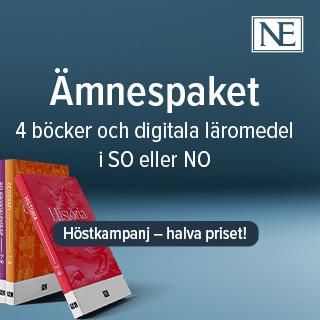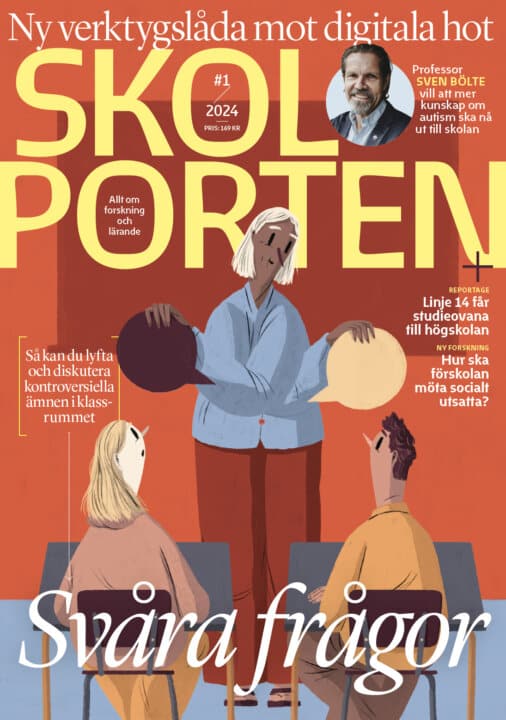The missing link in learning in science centres
Myten om att tonåringar saknar ett intresse för naturvetenskapliga ämnen är inte sann: det är utställningarnas utformning som misslyckas med att skapa en kreativ miljö för lärande. Det är Vaike Fors slutsats efter att ha undersökt hur tonåringar interagerar när de besöker Science Centers. Framtidens museer och utställningar måste skapa möjligheter för besökaren att utvecklas och göra egna tolkningar – annars blir lärandet tillrättalagt och platt.
Vaike Fors
Professor Mikael Alexandersson
Professor Staffan Selander, Lärarhögskolan i Stockholm
LTU – Luleå Tekniska universitet
2006-03-03
The missing link in learning in science centres
Institutionen för utbildningsvetenskap
Abstrakt
Utgångspunkten i projektet är att när ungdomar möter utställningar i science centres innehåller utställningarna inte bara objekt som skall beskådas och beröras genom olika slags aktiviteter. Det är också ett möte mellan det som utställningarna förmedlar avseende kultur, ideologi och historia, och ungdomarnas egen kultur och historia här och nu. Ungdomarnas lärande omfattar faktiska kunskaper i naturvetenskap och teknik. Samtidigt socialiseras de in i en kulturell praktik, med vissa värderingar kring historia och framtid, kring samhälle och teknik.
Studien har via visuell etnografi försökt sätta sig in i hur verksamheten uppfattas av ungdomarna själva; hur utställningarna tillskrivs mening och hur ungdomarna skapar science centret och dess utställningar när de på olika sätt agerar i dem. För att kunna beskriva denna komplexa process har forskningsmetoden sökt fånga och återge deras handlingar. Av det skälet har videokamera använts i datainsamlingen. Videofilm är inte enbart underlag till en skriven text. Den är också ett medium ur vilket ny kunskap kan genereras. Det visuella som fångas uppfattas här som en egen kunskapsform.
De ungdomar som medverkat i projektet har fått dokumentera sitt samspel med utställningarna såsom detta uppfattas av dem själva. Resultatet redovisas i avhandlingen genom att skriven text, bilder och videofilmer (på länkad hemsida) kombineras, och visar på hur något saknas för att lärande ska komma till stånd i ungdomarnas aktiviteter i utställningarna. Studien prövar inbyggda antaganden om kommunikation och lärande i science centre-utställningarna, som till övervägande del bygger på konstruktivistiska idéer från ett kognitivt perspektiv. Genom att istället anlägga ett i huvudsak sociokulturellt perspektiv så framkommer det att ungdomarna motsätter sig idén om att vara passiva mottagare av ett i förhand utvalt kunskapsstoff, m a o de saknar möjligheter att omförhandla meningen med de erbjudna aktiviteterna i utställningarna till att bli något meningsfullt för just dem.
Ur ett samhälleligt och historiskt perspektiv väcker detta frågor både om science centret som ideologiskt projekt och om dess framtida roll i den globaliserade världen.
The missing link in learning in science centres
Science centres have been identified as an important resource in encouraging teenagers to choose higher education in science and technology. This is of interest to society, since there seems to be a problem in getting sufficient numbers to do so. And accomplishing this is sometimes described as a fatal question for a nation s future prosperity and development. Still, there is an international trend where teenagers fail to visit science centres.
Through research, little is known about what is interesting or useful to the public, as well as how to reach those who are unengaged . Considering teenagers as exponents for what distinguishes today s society makes their apparent unwillingness to participate in science centres interesting to study with regards to what culture, history and ideology these centres were initially produced. Hence, from this point of view, what is missing in science centres that would make them interesting for the young people of today?
Many studies of learning in science centres have come to focus on visitors who visit voluntarily and how well the embedded messages in the exhibits have been acknowledged by these visitors. This study focuses instead on teenagers who are reluctant to participate in science centres, with their perspective of science centres as the point of departure, specifically what kind of social activities are formed in their encounters with science centre exhibits. This encounter is regarded as an encounter between the twodifferent practices of the science centre and the teenagers. The applied theoretical perspective is mainly assembled from socio-cultural theories of learning.
This research is a microanalytic study of five teenagers who were equipped with video cameras and asked to film a visit to the local science centre, Teknikens Hus. The films were later discussed in a focus-group interview consisting of the teenagers and the researcher. Visual ethnography provided the theoretical framework for this research design.
The results showed that the teenagers want to use exhibits to have the authority of interpretations and the possibilities to contribute to the meaning of the activity. At the same time, they want to use the exhibits in a way that the activities become places for developing social identity. To negotiate the meaning of the exhibits there is a need for an openness that may be constrained by too inflexible and limiting exhibit designs. This pattern is described as two different forms of participation in the exhibits; ignoring or extending the intended meaning of the exhibits. Meaningfulness also demands a closeness created by connections between the exhibit and the user s personal experiences. This pattern is described as two different ways in which the teenagers identified the exhibits; exhibits which they dissociated from or to which they had an ongoing relationship. Providing a space for negotiation seems crucial to inviting teenagers into opportunities of meaningful experiences, even more significant than any specific physical feature in the exhibit.
The teenagers agenda, in which forming practices where they can express themselves and contribute to the meaning seem to be very important, appears not to be greatly enabled by science centre exhibits. In this situation they learn to not participate. Science and technology represented in this matter show a ready-made world that they cannot change. The missing link in learning in science centres is here described as the part of the meaning making process where the teenagers get to re-negotiate the meaning of the activities in the centre and use the exhibits as tools to accomplish this.
Key words: Science center, learning, artefacts, visual ethnography, sociocultural theories, meaning making, interactive exhibits, social identity, negotiation of meaning, teenagers
Relaterade länkar

Modersmål
 Åk F–9
Åk F–9 Flickor med autism och adhd i skolan
 Åk F–Gy
Åk F–Gy 






